MARIANI’S
Virtual
Gourmet
September
6, 2020
NEWSLETTER
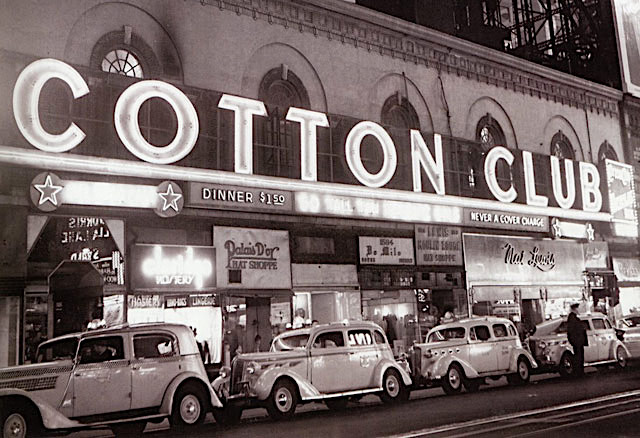
❖❖❖
IN THIS ISSUE
BOSTON'S WOODS HILL
PIER 4 BOUNCEBACK
By John Mariani
NEW YORK CORNER
LOVE AND PIZZA
CHAPTER TWENTY-FOUR
By John Mariani
NOTES FROM THE WINE CELLAR
By John Mariani
❖❖❖

FOUR NEW
EPISODES: "See the
USA"; "Tailgating";
"How
Italian Food Conquered the World"; "Detroit
Bounces Back."
BOSTON'S WOODS HILL
PIER 4 BOUNCEBACK
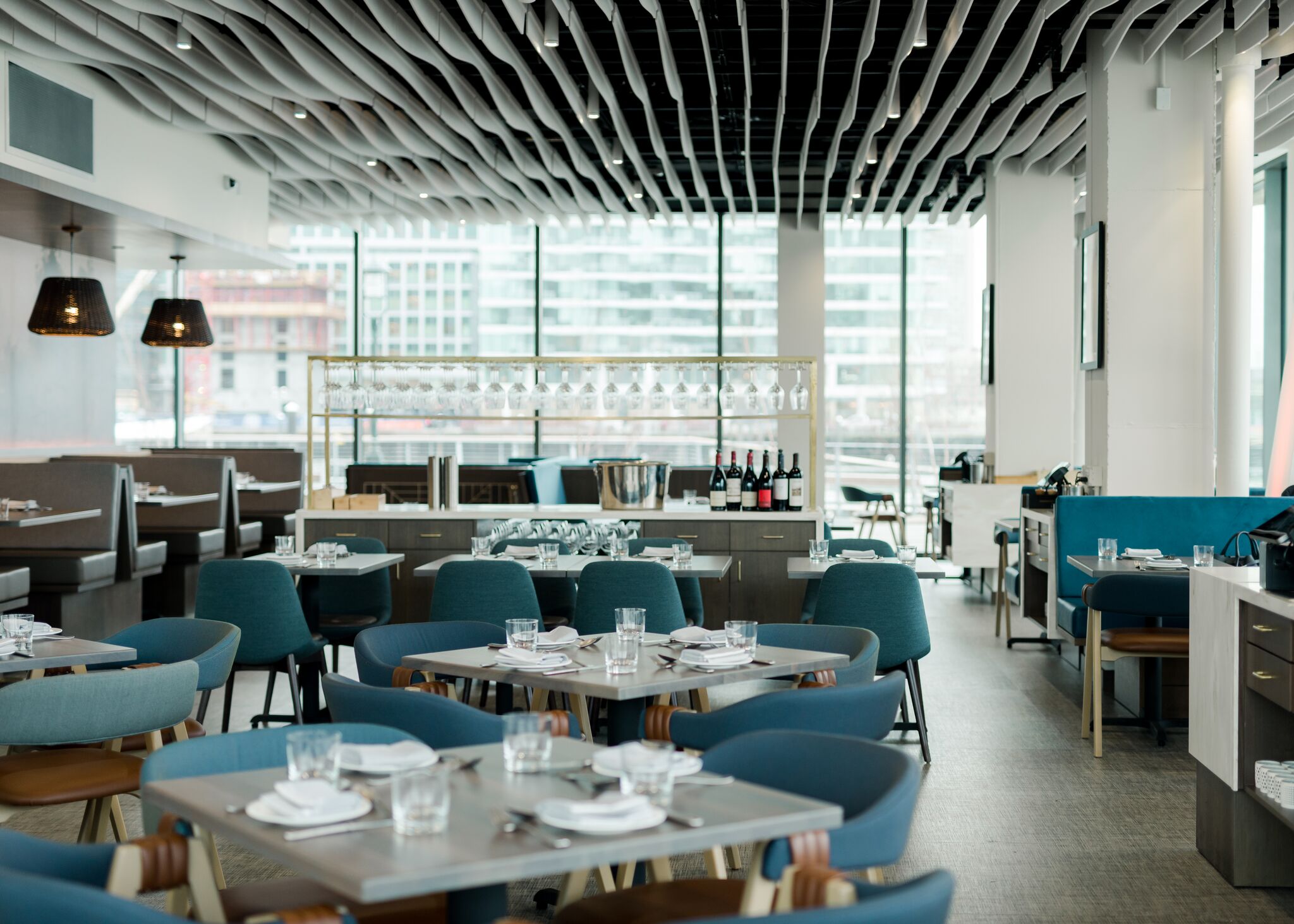
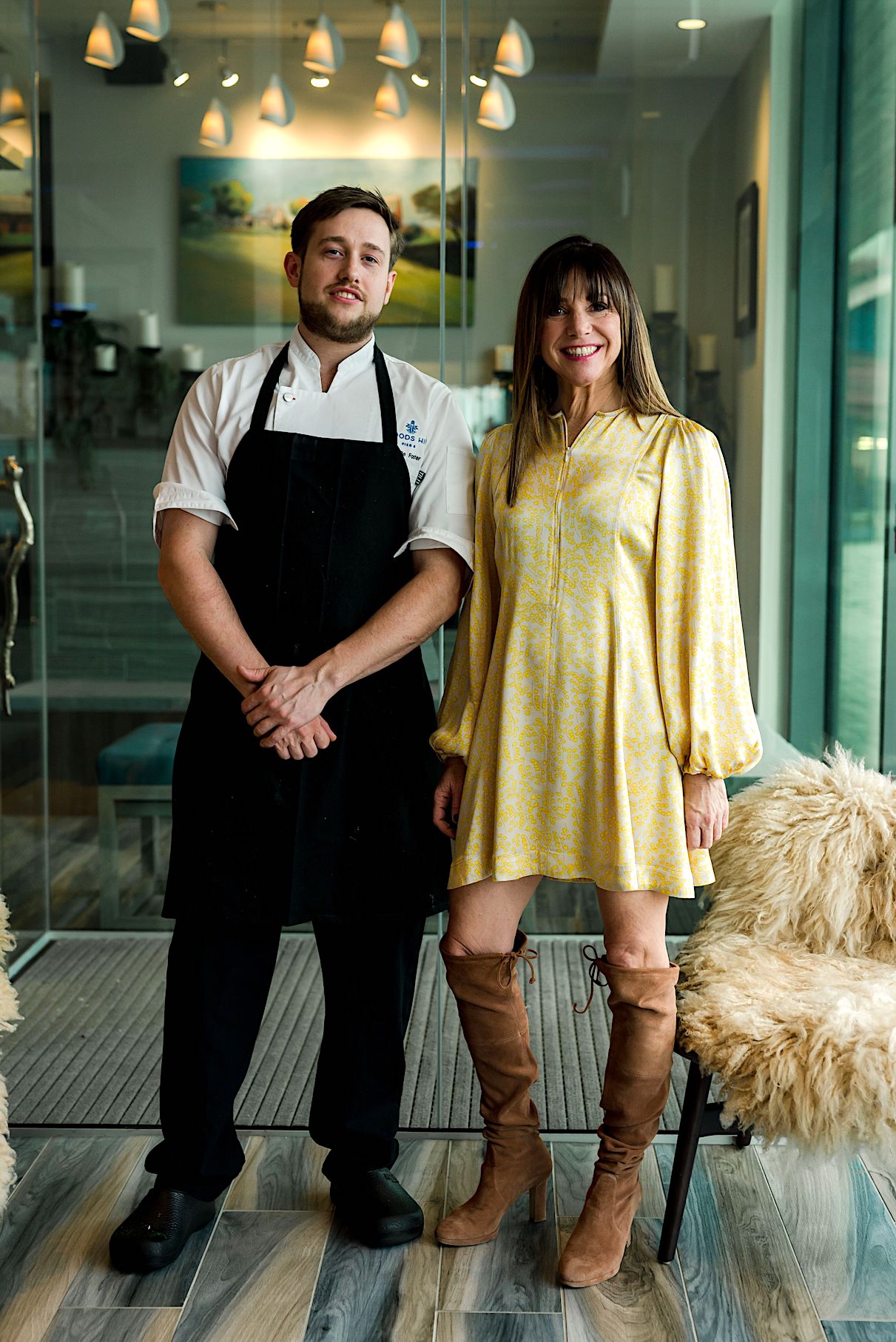 One
large operation that I visited last winter, before
the pandemic hit, had little time to resurrect its
flagship, of three establishments they own, and
re-hire sufficient personnel to enforce the flurry
of regulations, but, as I’ve noted before, there is
no more resilient and determined industry in America
than the restaurant sector.
One
large operation that I visited last winter, before
the pandemic hit, had little time to resurrect its
flagship, of three establishments they own, and
re-hire sufficient personnel to enforce the flurry
of regulations, but, as I’ve noted before, there is
no more resilient and determined industry in America
than the restaurant sector.Woods Hill Pier 4 (300 Pier Four Boulevard; 617-981-4577), located on the repurposed Boston Harbor piers where the famous (and creaky) Anthony’s Pier 4 used to sit, is part of a development, like New York’s Hudson Yards, that has razed whatever historic atmosphere the area once had, now a warren of hi-rise glass and steel buildings indistinguishable from their mirror images in Asia. Ironically, then, Woods Hill Pier 4 is a restaurant with a very clear link to the traditions of New England bounty and provender.
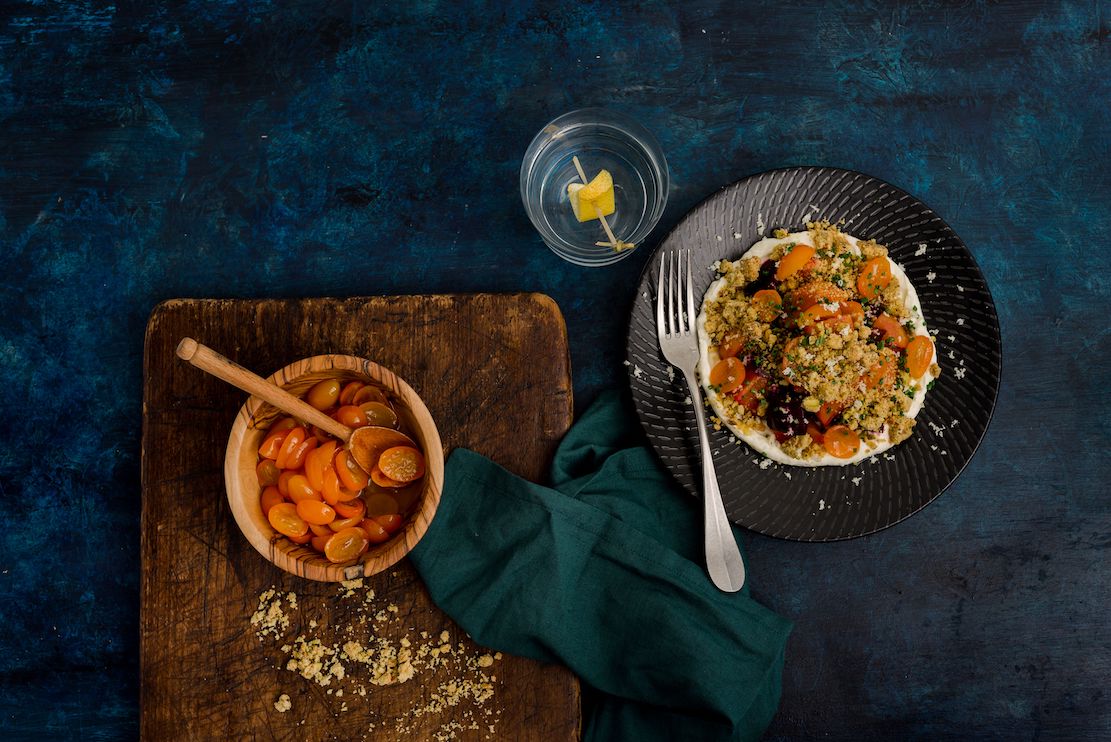 Owner
Kristin Canty and partner-chef Charlie Foster
(previously at Boston’s Toro and Clio) work with
their own Farm at Woods Hill in Concord and other
small purveyors to utilize “the whole animal”
approach via “grass fed proteins, sustainably
caught fish, raw milk cheeses, locally grown and
soaked organic grains, raw fermented foods, and
organic produce to deliver nutrient dense dishes
that employ the best ecologically viable
ingredients available.”
Owner
Kristin Canty and partner-chef Charlie Foster
(previously at Boston’s Toro and Clio) work with
their own Farm at Woods Hill in Concord and other
small purveyors to utilize “the whole animal”
approach via “grass fed proteins, sustainably
caught fish, raw milk cheeses, locally grown and
soaked organic grains, raw fermented foods, and
organic produce to deliver nutrient dense dishes
that employ the best ecologically viable
ingredients available.” Seeking to maximize all possible means of producing profits during the epidemic, they are currently open for dinner 7 days a week,
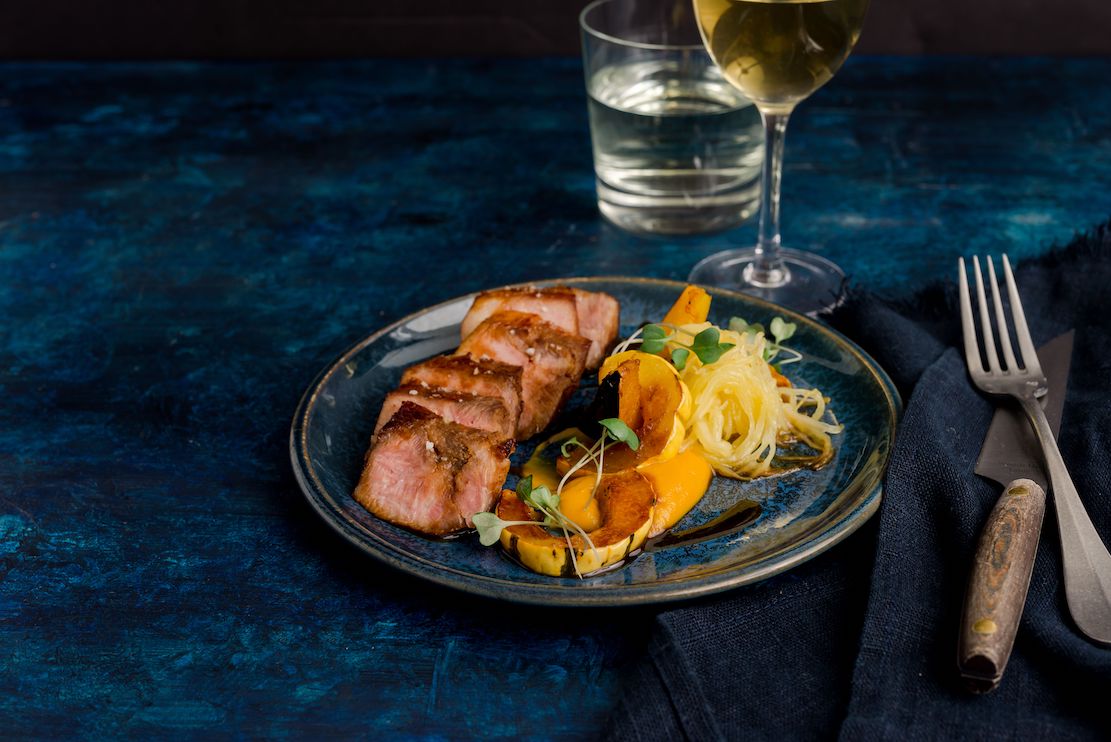 with lunch on
Friday, brunch on Saturday and Sunday. They are
doing “contactless” take-out, including cocktails,
and the outdoor patio season will extend into fall
and winter with heaters.
with lunch on
Friday, brunch on Saturday and Sunday. They are
doing “contactless” take-out, including cocktails,
and the outdoor patio season will extend into fall
and winter with heaters.It’s a good-looking modern dining room, though hardly farm-like, with a rippling wave-like ceiling, sea blue armchairs, and a large window wall. (At full capacity it gets very loud, but these days that’s not a problem with reduced seating.) When I visited in February, the menu was more or less winter-based, which meant cold water halibut with a luscious green peppercorn beurre monté Swiss chard, rutabaga and candied lemon ($27), and a lovely parsnip tartine with buckwheat crust, maple-glazed carrots, frisée and the tang of grapefruit ($15). Shaved Rhode Island whelk was a delight, bathed in lobster broth with green apple and lime ($17). The housemade pastas included a well-wrought bucatini all’amatriciana with guanciale bacon from their farm ($28) and another with lamb bacon, eggplant caponata, pine nuts and a mint gremolata ($29). Both are still on the menu. There’s also a lavish shellfish platter for four to six people at $130.
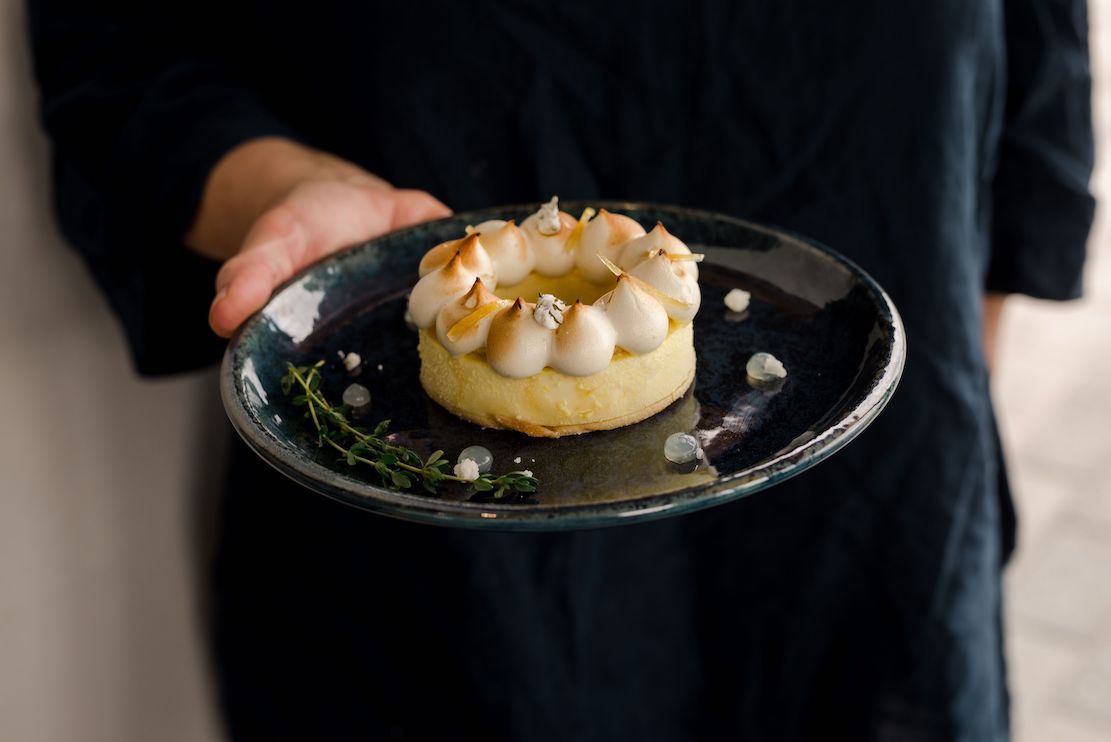 I’m not a fan
of grass-fed beef, but the lean steak tartare took
on fine flavors of rosemary and tallow aïoli, crispy
shallots for textural interest, a quail egg and
warm, chewy baguette ($16). I was
happier with the nicely fatted, crispy lamb ribs
with urfa pepper and a red wine glaze ($19), and a
full-flavored glazed pork butt with winter squash
($23). Incidentally, all menu items have code
letters to indicate if they are gluten-free,
dairy-free, vegetarian and nut-free. It’s come to
that.
I’m not a fan
of grass-fed beef, but the lean steak tartare took
on fine flavors of rosemary and tallow aïoli, crispy
shallots for textural interest, a quail egg and
warm, chewy baguette ($16). I was
happier with the nicely fatted, crispy lamb ribs
with urfa pepper and a red wine glaze ($19), and a
full-flavored glazed pork butt with winter squash
($23). Incidentally, all menu items have code
letters to indicate if they are gluten-free,
dairy-free, vegetarian and nut-free. It’s come to
that. Now, at the end of summer, menu items (I have not tried) include whelk with melon, cucumber, sesame, torn herbs, Thai chili vinaigrette ($18); pork belly confit with peach ponzu, Maine kelp salad, jalapeño (($17); a watermelon and fried clam salad with shaved sweet peppers, mint and habanero yogurt dressing ($17); and now, with tomatoes at their best in New England, heirloom tomato salad with crispy feta- stuffed squash blossom, basil and purslane aïoli and espelette pepper ($19). And this would hardly be Boston if they didn’t include a mound of lobster, celery, red onion and creme fraiche inside a warm popover.
For dessert there are hot beignets with rhubarb aïoli butter and chocolate ($12) and daily ice creams.
By John Mariani
Since, for the time being, I am unable to write about or review New York City restaurants, I have decided instead to print a serialized version of my (unpublished) novel Love and Pizza, which takes place in New York and Italy and involves a young, beautiful Bronx woman named Nicola Santini from an Italian family impassioned about food. As the story goes on, Nicola, who is a student at Columbia University, struggles to maintain her roots while seeing a future that could lead her far from them—a future that involves a career and a love affair that would change her life forever. So, while New York’s restaurants remain closed, I will run a chapter of the Love and Pizza each week until the crisis is over. Afterwards I shall be offering the entire book digitally. I hope you like the idea and even more that you will love Nicola, her family and her friends. I’d love to know what you think. Contact me at loveandpizza123@gmail.com
—John Mariani
To read previous chapters go to archive (beginning with March 29, 2020, issue.
LOVE AND PIZZA
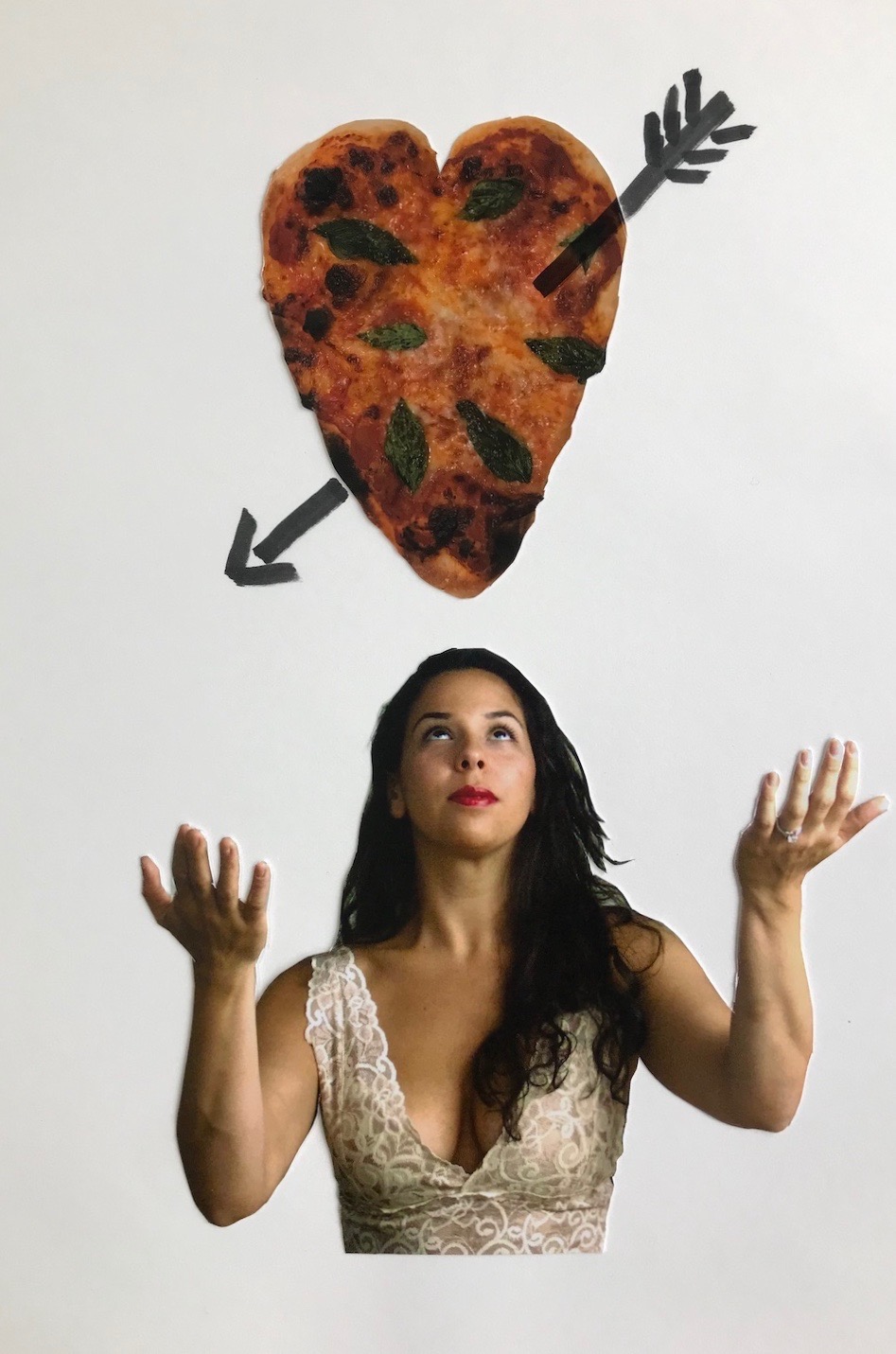
Cover Art By Galina Dargery
 When
Nicola and Giancarlo arrived at his hotel a few
minutes later, Nicola was not in the least
surprised that it was the city’s finest, the
five-star Principe di Savoia (left), known
for its glamorous international clientele as well
as being the requisite hotel for business
meetings. She
was, however, more than a little surprised when
the concierge simply handed Giancarlo the key to a
suite that his father maintained year-round at the
hotel.
When
Nicola and Giancarlo arrived at his hotel a few
minutes later, Nicola was not in the least
surprised that it was the city’s finest, the
five-star Principe di Savoia (left), known
for its glamorous international clientele as well
as being the requisite hotel for business
meetings. She
was, however, more than a little surprised when
the concierge simply handed Giancarlo the key to a
suite that his father maintained year-round at the
hotel. “Do you wish to freshen up, Nicola?” Giancarlo asked.
“Maybe I will,” she replied. And with that, Giancarlo brought her up to his suite, clicked open the heavy door and showed her into a series of rooms that seemed to sprawl over the entire floor. “My mother did some of the furnishings here,” he said, “since we often stay at the hotel when we’re in Milan.” Nicola started to speak, then bit her lip, thinking better than to ask something so stupid as, “I suppose you bring many women here, Giancarlo?” Instead, she said only, “She has very good taste,” looking around at the mix of the hotel’s antiques and more modern motifs Signora Cavallacci had brought in. “Where’s the bathroom?”
“Ah, there’s one here and another one through there.”
Nicola went for the one farther away, wanting to see the bedroom. She closed the door behind her, looked at the gold fixtures, golden ropes holding the curtains, and the expanse of beautiful red marble throughout. She looked in the mirror, shook her hair, then combed it. From her purse she brought out a small bottle of mouthwash. Then she took a deep breath and exited across the bedroom carpet to the living room, where Giancarlo had removed his blazer.
“I thought—if you want—instead of going downstairs to the bar, we might order a digestiva up to the room,” he said, not taking his eyes off her.
Nicola thought for only a moment, feeling remarkably sure of herself and of what would happen next. “I think I would prefer that, si.”
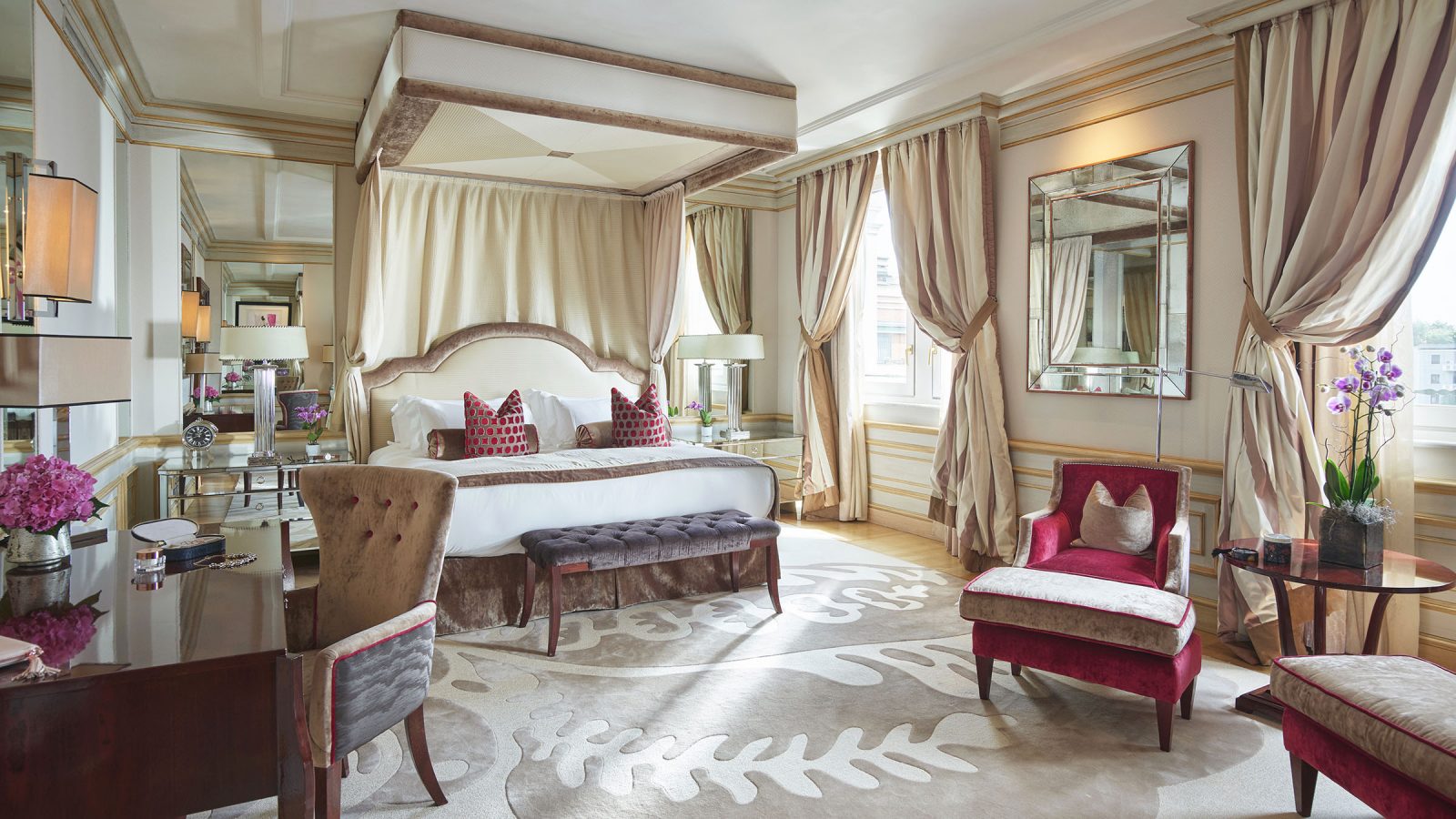 Then Giancarlo smacked his forehead and said,
“Ah, imbecilo!
We have a little bar here in the suite,” then
proceeded over to a mahogany cabinet that opened to
reveal at least a dozen bottles of brandies, liquors
and after-dinner drinks. “What do
you prefer?”
Then Giancarlo smacked his forehead and said,
“Ah, imbecilo!
We have a little bar here in the suite,” then
proceeded over to a mahogany cabinet that opened to
reveal at least a dozen bottles of brandies, liquors
and after-dinner drinks. “What do
you prefer?”“Oh, you choose.”
“Well, come here and look. Maybe there’s something you have never tried before.”
Nicola thought to herself, he doesn't know how right he is.
She crossed the thick carpet to where he stood. He waved his hand and said, “Whatever you like.”
Nicola didn’t bother looking at the bottles. She looked at Giancarlo and, as if on cue, he slowly put his arms around her waist. “Bellisima,” he said. “You are a very, very beautiful woman, Nicolina.” Then he kissed her very lightly on the lips, then again, then gave her the slightest little bites on her mouth as she wrapped her arms around his neck.
Within seconds Giancarlo had danced Nicola to the middle of the room, kissing her in a tempo of passion softened with lingering kisses to her cheeks and forehead. He turned her around and kissed the nape of her beautiful long neck and Nicola swooned, turning her head back and forth.
Then, taking her hand, Giancarlo said very quietly, “Come, Nicolina,” leading her to the huge, ornate master bedroom with an enormous bed. Neither said anything but each other’s names, repeated as if they were the loveliest sounds in the world. Then, very slowly, Giancarlo began removing each article of Nicola’s clothing, first her leather jacket, tossing it on the floor, then lifting her turtleneck over her head, seeing her body’s flesh for the first time, the broad shoulders and her wondrous breasts beneath black lace lingerie.
Nicola, a little hesitant, unbuttoned Giancarlo’s soft shirt, revealing his slender chest, highlighted with tiny golden hairs. The ritual of undressing—practiced millions upon millions of times over thousands and thousands of years—took its natural course, with Nicola soon standing in all her radiant beauty before Giancarlo. Any feelings of embarrassment were at once banished by the thrill of her enticing and exciting her first lover.
It was she who pulled back the heavy satin bedspread and lay down, her legs together, but, with the gentlest nudge of his knee, Giancarlo parted them and lowered himself on her body, both of them sighing softly at the touch. Then, after many more kisses and caresses, he entered her very slowly—even though he did not know she was a virgin--and began a soft rhythm that Nicola wished never to stop. She closed her eyes and let the pleasure run through her, and when they had finished making love, she took his head in her hands and ran them through his beautiful hair, saying his name over and over again.
They made love again not long afterwards, and then, lying next to her with his arm around her waist, Giancarlo fell into a deep sleep as Nicola watched his chest rise and fall with each contented breath.
Nicola was awakened by
the pealing of the huge bells in the Duomo, which
bellowed by comparison to the lone clanging bell
in Our Lady on Mount Carmel church back home. Giancarlo,
dressed but still without socks and shoes, had
risen a little before her, and when he saw her
stir, came over and kissed her neck. “Buon giorno,
bella, how are you this morning?”
Nicola turned over and smiled at him,
putting her arms around his neck. “I have never
felt better, Giancarlo, never.”
“Good!” he exclaimed. “I have ordered some
breakfast, so take your time.” He walked out of
the bedroom, smiling over his shoulder at her.
It then occurred to Nicola that her first
intercourse might well have bloodied the sheets,
but she pulled back the bedspread and saw only
very little spotting, so she flopped backwards and
said out loud, “Thank God for that.” She found a
new cellophane-wrapped toothbrush on the sink,
then she showered.
Not putting on any make-up at all, she
donned a very soft bathrobe hanging in the
spacious dressing room, pushed up the sleeves and
walked into the living room, where Giancarlo was
reading La
Stampa, the newspaper of Turin. He
looked at her, rose to his feet, and said, “My
God, Nicola, you are as beautiful without make-up
as with it!”
Nicola, who was not a woman given to
blushing, did so at that moment. They
embraced, and the doorbell rang; it was a
continental breakfast of croissants, brioche, and
orange juice.
The room had its own espresso machine,
which Giancarlo was already attending to. “I
didn’t know if you wanted eggs, Nicola. I know
Americans like eggs.”
“No, no, this will be fine, grazie.” She had
quite an appetite, which she credited to their
lovemaking, and she wondered if they would make
love again that morning.
 “Cara,”
said
Giancarlo. “It
kills me but I have to leave in an hour. Sunday
dinner with the family is more sacrosanct than
going to Mass.”
“Cara,”
said
Giancarlo. “It
kills me but I have to leave in an hour. Sunday
dinner with the family is more sacrosanct than
going to Mass.”
Nicola’s face fell, hoping that Giancarlo
was not lying.
“Oh, it’s pretty much the case in my
family, too, Giancarlo,” she said. “Believe
me, I understand.”
The thought then occurred to her that he
might invite her—not today but someday in the
future—to his villa and that in her wilder dreams
he might someday come to dinner at her house in
Belmont. She was at least sure that he would not
be disappointed in the food.
She walked out onto the terrace and looked
out over the city, then turned and saw
Gianfranco buttoning his shirt.
“So, you are ready to go?” she asked.
“Not unless you kick me out of my own
suite,” he answered, putting his arm around her
waist and lifting her into his arms, carrying her
into the bedroom and untying the belt of her
bathrobe.
Nicola pulled him down upon her, then
rolled him over on his back, tearing at his barely
buttoned shirt and moving her warm breasts across
his torso.
The hour went by much too fast, and
Giancarlo frowned, saying, “I have to go, cara.”
“I know you do, Giancarlo,” then, after a
moment, “So when do I see you again?”
“Is next weekend too soon?”
His answer forced a deep breath into her
chest. “No, no, no, no!
Sooner, sooner, sooner!”
she screamed, play acting like a small child. Then she
suddenly realized that she was flying to New York
in a couple of days. “Oh, Giancarlo! I forgot!
I’m flying to America on April first! That
means I won’t see you for two weeks.”
Giancarlo looked truly crestfallen but
resigned. “Ah,
cara, I
forgot too. But
you need to go—the magazine, see your family for
Easter. I
will be with my family for the holiday weekend, so
it is beyond our control. But then
you will be back, and we will get together as soon
as possible.”
“Promise?”
Giancarlo crossed his heart, put his hands
together and said, “Promise.” He
kissed her, looked at his watch and said, “I hope
there won’t be traffic on the A4. Okay, I speak to
you this week. Just drop the key off at the front
desk.” It suddenly occurred to Nicola that she was
not the first woman to do so.
Nicola grabbed him for one last hug and
kiss, said “Ciao,”
and he hurried to catch an elevator that was just
opening. Nicola,
still standing nude in the doorway but unseen by
the people in the elevator, went back in the room,
lay down on the bed, and wondered how she was
going to tell her sister Natalie about all this.
On the other
hand, Nicola had been giddy to tell her friends in
the dorm about the evening at Savini but swore to
herself that she would share with them only the
barest of details about her night at the Principe
di Savoia. This was not that “fling” Catherine had
encouraged her to have. Although,
curiously
enough, Nicola’s head had never been clearer.
ITALIAN WINES FOR EARLY
AUTUMN
By John Mariani
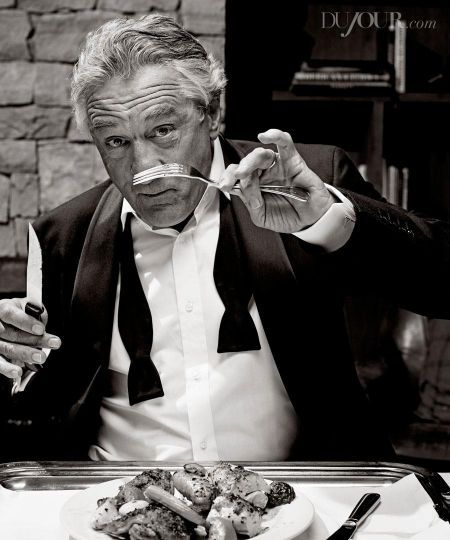 Anyone with a lot of time on their
hands who might do a search of my wine columns
will find the largest percentage, though by no
means the majority, of wines I recommend are
Italian. My reasons for this have little to do
with my own Italian-American background, for in
my house when I was growing up wine was a
sometimes thing at the dinner table and it never
went beyond a bottle of straw-covered Chianti.
Anyone with a lot of time on their
hands who might do a search of my wine columns
will find the largest percentage, though by no
means the majority, of wines I recommend are
Italian. My reasons for this have little to do
with my own Italian-American background, for in
my house when I was growing up wine was a
sometimes thing at the dinner table and it never
went beyond a bottle of straw-covered Chianti.
But later, when I began traveling to Italy,
I fell in love with the remarkable regionality of
Italian wines, from Piedmont to Calabria, and, as
more and better quality Italian wines came into
the market, I came to believe that, overall, the
best of them have the flavors typical of their
terroir and varietal character at a time when so
many other countries’ wineries are trying to
create wines to meet some idea of what the global
market would like.
By the same token, Italy’s white wines do
not often rise above the likeable level, and very
few are truly distinguished. And oceans of
mediocre Prosecco have put that sparkling wine
into a category as “good-for-mixing.”
That said, while you can happily drink
Italian wines year-round, I think that autumn
brings foods into play with Italian red wines that
are superb matches in a way that, say, a massive
California Zinfandel or one-dimensional Bordeaux
Bourgeois Cru do not. Here are some
examples of Italian reds that will be as wonderful
with tomato- or mushrooms-based sauces as with game and white
truffles.
sauces as with game and white
truffles.
Worth noting, the 2016 vintage is showing
as stellar. With ideal growing conditions, it is
shaping up to be one of the most highly regarded
in recent memory. The wines are supple, rich and
approachable, with extraordinary elegance,
complexity and character.
Pio
Cesare Barbaresco DOCG 2016 ($82)—This
is from Pio Cesare’s well-regarded “Il
Bricco” estate and, even more specifically, the
favored hill of San Stefanetto, both located in
Treiso. The vintage was a very good, very
promising one, allowing for a knitting of all the
elements that make Barbaresco the “Queen of
Piedmont Wines.” The somewhat bolder Barolo ($82)
from the same vintage shows an intensity that can
take some age, but drinking it now with mushroom-
or cheese-based dishes is more than acceptable.
Forte Masso Langhe
2018
($30)—Forte Masso also makes excellent
Barolos, but for something a little lighter and
less expensive, this 100% Nebbiolo from the
Castelletto region is, at 13.5% alcohol, just
right for easy drinking throughout a Piemontese
meal that might begin with an egg-based agnolotti followed
by a hearty bollito
misto of simmered meats in their own broth.
 Ca’Marcanda Magari 2016
($70)—Here’s another of Gaja’s Bordeaux blends,
this time 60% Cabernet Franc, 30% Cabernet
Sauvignon and 10% Petit Verdot, emitting a
flourishing bouquet and voluptuous body whose Cab
Sauvignon is kept in good check by the dominating
Franc. “Magari”
is Piemontese slang for “what if,” meaning Angelo
Gaja took a chance on this blend, which has turned
out to be a best seller for the estate. The 2016,
at 14% alcohol, is lighter than the 2017’s 14.5%.
Both go well with braised meats and polenta.
Ca’Marcanda Magari 2016
($70)—Here’s another of Gaja’s Bordeaux blends,
this time 60% Cabernet Franc, 30% Cabernet
Sauvignon and 10% Petit Verdot, emitting a
flourishing bouquet and voluptuous body whose Cab
Sauvignon is kept in good check by the dominating
Franc. “Magari”
is Piemontese slang for “what if,” meaning Angelo
Gaja took a chance on this blend, which has turned
out to be a best seller for the estate. The 2016,
at 14% alcohol, is lighter than the 2017’s 14.5%.
Both go well with braised meats and polenta.
Marchesi di Barolo
Maraia Barbera del Monferrato 2018 ($14-$18)—“Maraia”
is another Piemontese word meaning a group of
“little rascals,” referring to the wine’s
“liveliness.” The Barbera grape is lovable for
just that reason, because it has good acid and is
very easy to drink, especially when it comes from
fruit from Monferrato. Very good with pizza or
tomato sauces.
Frescobaldi Tenuta
Perano Riserva 2016 Chianti Classico 2016
($27)—The DOCG designation was once controversial
for Chianti Classico, but the best producers have
proven their quality year after year, as does
Frescobaldi with this Riserva (24 months of
aging), with formidable body. It’s a tad higher,
at 14.5%, in alcohol than Chiantis have
traditionally been, but the extra age softens the
wine. Very good match-up with game dishes like
venison or quail.
Quercia al Poggio
Chianti Classico 2017
($28, but available for less)—Very well priced for
a Classico these days, and owners Michela and
Vittorio Rossi are traditionalists, who blend
Sangiovese with other Tuscan varietals to produce
silky, complex wines that still have the kind of
simple honesty one hopes for in a Chianti. Drink
it with risotto with white truffles, especially
since the price of the bottle will help blunt the
price of the truffles.
Sponsored by

Any of John Mariani's books below may be ordered from amazon.com.
 The Hound in Heaven
(21st Century Lion Books) is a novella, and
for anyone who loves dogs, Christmas, romance,
inspiration, even the supernatural, I hope you'll find
this to be a treasured favorite. The story
concerns how, after a New England teacher, his wife and
their two daughters adopt a stray puppy found in their
barn in northern Maine, their lives seem full of promise.
But when tragedy strikes, their wonderful dog Lazarus and
the spirit of Christmas are the only things that may bring
his master back from the edge of despair.
The Hound in Heaven
(21st Century Lion Books) is a novella, and
for anyone who loves dogs, Christmas, romance,
inspiration, even the supernatural, I hope you'll find
this to be a treasured favorite. The story
concerns how, after a New England teacher, his wife and
their two daughters adopt a stray puppy found in their
barn in northern Maine, their lives seem full of promise.
But when tragedy strikes, their wonderful dog Lazarus and
the spirit of Christmas are the only things that may bring
his master back from the edge of despair. WATCH THE VIDEO!
“What a huge surprise turn this story took! I was completely stunned! I truly enjoyed this book and its message.” – Actress Ali MacGraw
“He had me at Page One. The amount of heart, human insight, soul searching, and deft literary strength that John Mariani pours into this airtight novella is vertigo-inducing. Perhaps ‘wow’ would be the best comment.” – James Dalessandro, author of Bohemian Heart and 1906.
“John Mariani’s Hound in Heaven starts with a well-painted portrayal of an American family, along with the requisite dog. A surprise event flips the action of the novel and captures us for a voyage leading to a hopeful and heart-warming message. A page turning, one sitting read, it’s the perfect antidote for the winter and promotion of holiday celebration.” – Ann Pearlman, author of The Christmas Cookie Club and A Gift for my Sister.
“John Mariani’s concise, achingly beautiful novella pulls a literary rabbit out of a hat – a mash-up of the cosmic and the intimate, the tragic and the heart-warming – a Christmas tale for all ages, and all faiths. Read it to your children, read it to yourself… but read it. Early and often. Highly recommended.” – Jay Bonansinga, New York Times bestselling author of Pinkerton’s War, The Sinking of The Eastland, and The Walking Dead: The Road To Woodbury.
“Amazing things happen when you open your heart to an animal. The Hound in Heaven delivers a powerful story of healing that is forged in the spiritual relationship between a man and his best friend. The book brings a message of hope that can enrich our images of family, love, and loss.” – Dr. Barbara Royal, author of The Royal Treatment.
 |
The Encyclopedia of American Food and Drink by John F. Mariani (Bloomsbury USA, $35) Modesty forbids me to praise my own new book, but let me proudly say that it is an extensive revision of the 4th edition that appeared more than a decade ago, before locavores, molecular cuisine, modernist cuisine, the Food Network and so much more, now included. Word origins have been completely updated, as have per capita consumption and production stats. Most important, for the first time since publication in the 1980s, the book includes more than 100 biographies of Americans who have changed the way we cook, eat and drink -- from Fannie Farmer and Julia Child to Robert Mondavi and Thomas Keller. "This book is amazing! It has entries for everything from `abalone' to `zwieback,' plus more than 500 recipes for classic American dishes and drinks."--Devra First, The Boston Globe. "Much needed in any kitchen library."--Bon Appetit. |
"Eating Italian will never be the same after reading John Mariani's entertaining and savory gastronomical history of the cuisine of Italy and how it won over appetites worldwide. . . . This book is such a tasteful narrative that it will literally make you hungry for Italian food and arouse your appetite for gastronomical history."--Don Oldenburg, USA Today. "Italian
restaurants--some good, some glitzy--far
outnumber their French rivals. Many of
these establishments are zestfully described
in How Italian Food Conquered the World, an
entertaining and fact-filled chronicle by
food-and-wine correspondent John F.
Mariani."--Aram Bakshian Jr., Wall Street
Journal.
"Equal parts
history, sociology, gastronomy, and just
plain fun, How Italian Food Conquered the
World tells the captivating and delicious
story of the (let's face it) everybody's
favorite cuisine with clarity, verve and
more than one surprise."--Colman Andrews,
editorial director of The Daily
Meal.com. "A fantastic and fascinating
read, covering everything from the influence
of Venice's spice trade to the impact of
Italian immigrants in America and the
evolution of alta cucina. This book will
serve as a terrific resource to anyone
interested in the real story of Italian
food."--Mary Ann Esposito, host of PBS-TV's
Ciao
Italia. "John Mariani has written the
definitive history of how Italians won their
way into our hearts, minds, and
stomachs. It's a story of pleasure over
pomp and taste over technique."--Danny Meyer,
owner of NYC restaurants Union Square
Cafe, The Modern, and Maialino.
|
 |
 |
 |
 |
 |
 |
 |
 |
 Everett Potter's Travel Report:
Everett Potter's Travel Report: 
 Eating Las
Vegas JOHN CURTAS has been covering
the Las Vegas food and restaurant scene
since 1995. He is the co-author of EATING LAS
VEGAS – The 50 Essential Restaurants (as
well as the author of the Eating Las
Vegas web site: www.eatinglasvegas.
He can also be seen every Friday morning as
the “resident foodie” for Wake Up With the
Wagners on KSNV TV (NBC) Channel 3 in
Las Vegas.
Eating Las
Vegas JOHN CURTAS has been covering
the Las Vegas food and restaurant scene
since 1995. He is the co-author of EATING LAS
VEGAS – The 50 Essential Restaurants (as
well as the author of the Eating Las
Vegas web site: www.eatinglasvegas.
He can also be seen every Friday morning as
the “resident foodie” for Wake Up With the
Wagners on KSNV TV (NBC) Channel 3 in
Las Vegas.
MARIANI'S VIRTUAL GOURMET
NEWSLETTER is published weekly. Publisher: John Mariani. Editor: Walter Bagley. Contributing Writers: Christopher Mariani,
Robert Mariani, Misha Mariani, John A. Curtas, Gerry Dawes, Geoff Kalish,
and Brian Freedman. Contributing
Photographer: Galina Dargery. Technical
Advisor: Gerry
McLoughlin.
If you wish to subscribe to this
newsletter, please click here: http://www.johnmariani.com/subscribe/index.html
© copyright John Mariani 2020

